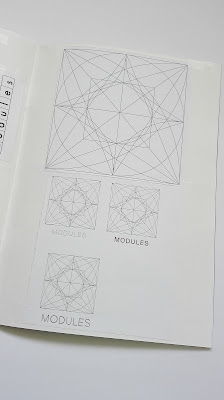Semiotics
Semiotics is the 'science' of studying signs.
How language works as a systems - Ferdinand de Saussure (Swiss Linguist)
How things mean what they mean
Structuralism
- understand rules of language
- post modernism got rid of structuralism so we don't have it now
Sign
- Semiotics is the study of signs
- A sign is anything that conveys meaning e.g. colour, intonation. They are moments of communication
Sign = signifier and signified
Signifier evokes meaning or is an utterance - flick of brush etc
Signified is the experience for receivers
A sign combines the sender and receiver
It is an arbitrary relationship
There is no innate meaning in anything just social constructs. We are socially conditioned to understand them e.g. red means stop at the traffic lights
Everything means nothing
How signs relate to other signs are called codes
Barthes (1957)
Denotation is the literal meaning of something - conscious level
Connotation is the cultural associations - subconscious level
With connotations we forget why they mean things e.g. why is black bad?
Signs signify on both these levels
A code is a system of symbols and signs
If we unravel the meaning in language by understnading the written and spoken material, we can also unravel meaning in cultural practices if we take culture as operating like a language.
Can disrupt intuitiveness
Codes found in all cultural practices e.g. drawing, speaking etc
In order to makes sense of cultural artifacts we need to learn and understand their codes
We need to acknowledge that codes rely on shared knowledge.
Saussure defined two ways in which signs are organised into Codes
- Paradigm - A set of signs from which one is to be chosen
- Syntagm - the message into which the chosen signs are to be combined
All messages involve selection (from a Paradigm) and combination (into a Syntagm)
Codes are signifying systems
- they have a number of units to choose from (Paradigmatic dimension) which are combined by rules or conventions (Syntagmatic dimension).
- When we communicate we select from a paradigm. All units in the paradigm must have something in common. Each of the units in a paradigm must be clearly distinguished from the others.
- Paradigm - alphabet - signifiers - each letter - makes a syntagm
- meaning because of shared code
- code only valued in that culture
- destabilises truth to universal truth
- You never do something that is you. You can never invent something . You just arrange things that already exist - a paradigm of choices - changes syntagmatic structure, which changes the message.
Once a unit has been chosen from a paradigm it is combined with other units. This combination is called a syntagm. A sentence is a syntagm of words or interior design is a syntagm of choices from the paradigm of chairs, wallpaper etc
Paradigm is a choice - syntagm is the relationship
Syntagmatic analysis aims to establish the 'surface structure' of a text and the relationships between its parts. The study of syntagmatic relations reveals rules underlying the production and interpretation of texts.
Semiotics calls everything a text
Paradigmatic analysis
Paradigmatic analysis is a structural technique which seeks to identify the various paradigms which underlie the 'surface structure' of a text. This aspect of structural analysis involves a consideration of the positive or negative connotations of each signifier (revealed through the use of one signifier rather than another), and the existence of 'underlying' thematic paradigms. Paradigmatic analysis involves comparing and contrasting each of the signifiers present in the text with absent signifiers which in similar circumstances might have been chosen , and considering the significance of the choices made.
When we recieve messages we accept the dominant (hegemonic) reading , negotiated reading or Oppositional (counter - hegemonic) reading.
Dominant (Hegemonic) reading
- reader fully shares the text's code and accepts and reproduces the preferred reading (a reading which may not have been the result of any conscious intention on the part of the authors)
- the code seems 'natural' and 'transparent'
Negotiated Reading
- the reader partly shares the text's code and broadly accepts the preferred reading, but sometimes resists and modifies it in a way which reflects their own position, experiences and interests (local and personal conditions may be seen as exceptions to the general rule)
- this position involves contradictions
Oppositional (Counter - Hegemonic) Reading
- the reader, whose social situation places them in a directly oppositional relation to the dominant code, understands the preferred reading but does not share the text's code so rejects this reading
- has an alternative frame of reference




















